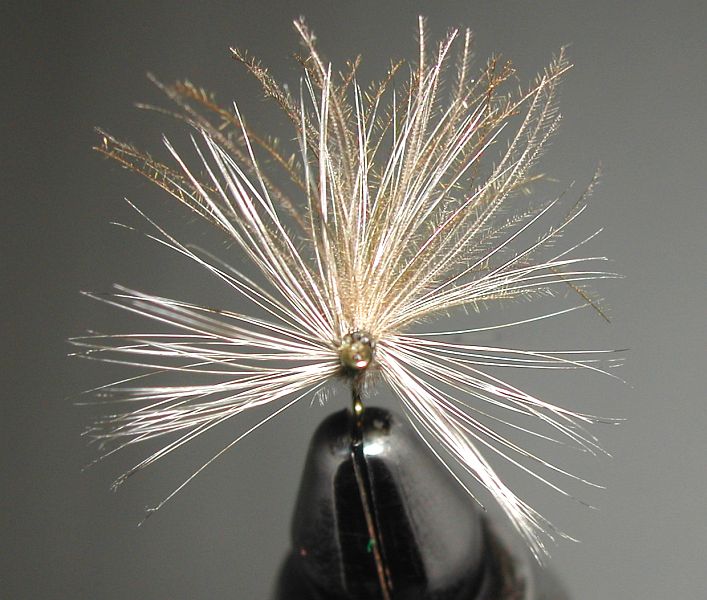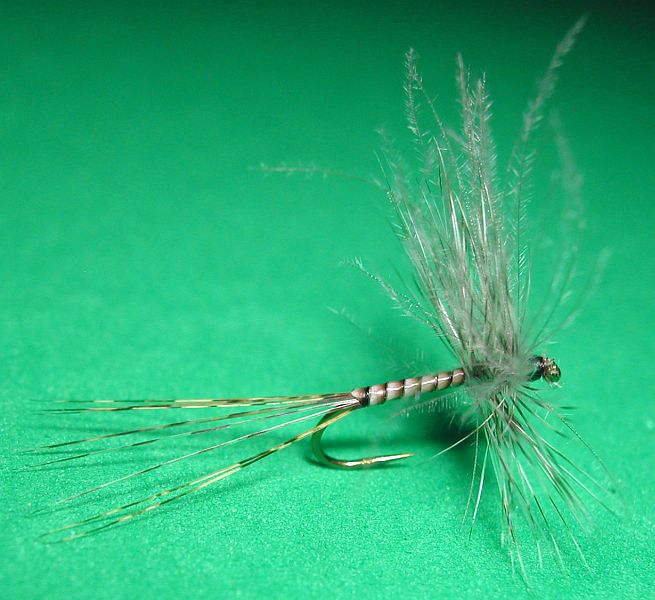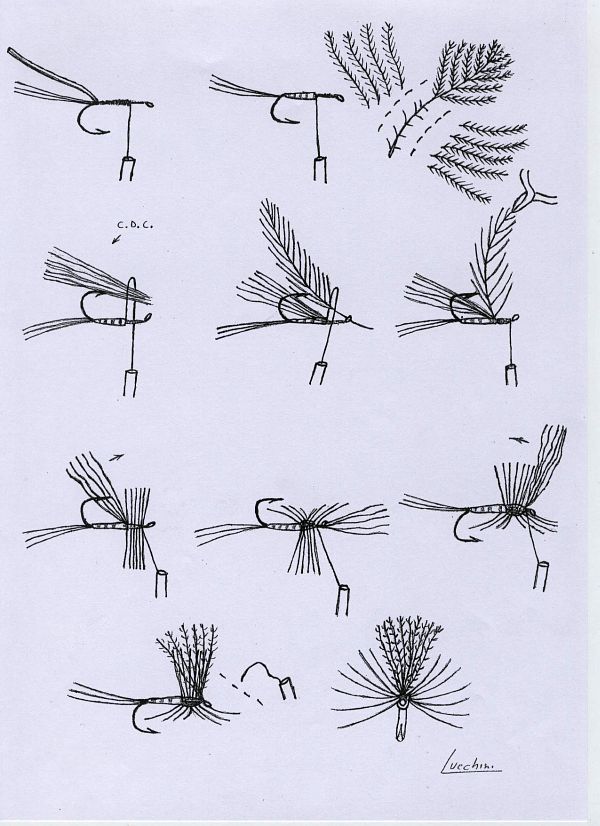CDC SPLIT-HACKLE & WINGED DRY FLIES
AGOSTINO RONCALLO

Seen from the front notice the split hackle
The spread of hackles supporting classic dry flies cannot always guarantee a perfect floating position as the hackles are not properly distributed around the thorax and the wings mounted symmetrically and upright tend to tip the fly over.
So the long held belief that hackle fibres must be arranged around the thorax in a circular shape to support the fly on the water surface (which we can consider a plane) certainly can be challenged.

It is true that the plane of the surface water is not solid and that hackle barbs penetrate it, but this still gives rise in my view to problems of structure and flotation in a dry fly.

Hackle barbs, in the lower thorax area particularly, penetrate the water and do not really facilitate buoyancy. Eventually the fly absorbs water through capillary action through these fibres and the fly starts to sink.
For years I separated the cock hackle on the under part of the thorax with fibres from feathers of large birds such as pheasants, herons, geese and others. I’ll explain how in the tying sequence.

I used this method for years, until I had an idea: I thought if I used CDC hackle barbs to split the cock hackle it would add flotation, spread the cock hackle and give the under surface of the fly more stability on the water surface, but in drawing the CDC hackles upwards I could also conveniently form the wings of the fly.
Tying sequence

1) Dress the shank and tie in a sparse bunch of cock quills as a tail.
2) Wrap the body using stripped peacock quill ending mid shank.
3) Cut off a tuft of long fibresDa una hackle di CDC. from a CDC hackle.
4) Rotate the vice and tie in the tuft of CDC fibres on the under-surface of the hook next to the body.
5) At the same time, tie in the cock hackle.
6) Wrap the hackle up the shank of the hook and tie it off.
7) Divide the cock hackle on the underside of the thorax by pulling the bunch of CDC fibres through them.
8) Fix the CDC fibres just behind the eye off the hook with tying thread.
9) Rotate the vice back to its normal position and lift the CDC fires upwards to represent the wings of the fly.
10) With a few turns of thread, fix the CDC in an upright position.
To get the best results you should use hackles that are not too rigid, with ends that can rest on the water surface rather than penetrate it.
With this tying method you can imitate the mayflies that float with the front of the body raised off the water. I've always liked ephemera imitations tied in this way: the body of the fly floats well with the front raised on the water, while the wings are slightly turned back, taking the same position as those of the insect.
Agostino Roncallo, Genoa, Italy


